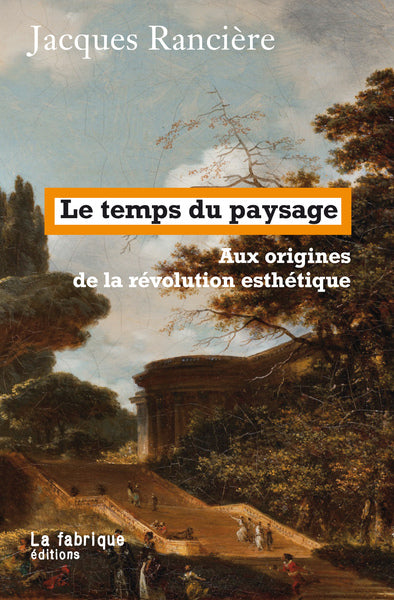THE TIME OF LANDSCAPE - AT THE ORIGINS OF THE AESTHETIC REVOLUTION
THE TIME OF LANDSCAPE - AT THE ORIGINS OF THE AESTHETIC REVOLUTION
It is probably necessary to specify the object that gives its title to this book. Time
The landscape considered here is not the one we began to describe in
poems or to represent on walls flower gardens, dark
forests, majestic mountains, peaceful lakes or rough seas. It
is not that of the birth and transformations of this word or of
its equivalents in other languages. It is the one where the landscape has
imposed as a specific object of thought. This object of thought has
formed through concrete quarrels over the layout of gardens,
detailed descriptions of parks decorated with ancient temples or
humble forest trails, travel stories across lakes and
lonely mountains or evocations of mythological or rustic paintings.
And this book will follow its twists and turns. But what is formed through these stories
and these quarrels are not simply the taste for a spectacle which charms
the eyes or elevates the soul. It is the experience of a form of unity of the
sensitive diversity capable of modifying the existing configuration of objects of
thought and the notions specific to thinking them. The time of the landscape is that in which
the harmony or disharmony presented by landscaped gardens or by the
wild nature contributes to overturning the criteria of beauty and the very meaning
of the word art. This upheaval implies another which affects the meaning of a
fundamental notion, in common usage as in philosophical reflection,
that of nature. But we do not touch nature without touching society
which is supposed to obey its laws. And the time of the landscape is also that where
a certain harmony of the spectacle of fields, forests or waterways
proves to be suitable for metaphorizing the order that suits human societies.
This time can, in Western societies, be situated with enough
precision. It coincides with the birth of aesthetics, understood not as
particular discipline but as a regime of thought of art. But it is
also contemporary with the French Revolution, understood not as succession
of more or less violent institutional upheavals but as a revolution
in the very idea of what brings together a human community. It belongs
so at a time when the conjunction of these two upheavals leaves
perceive, in a still confused way, a common horizon, that of a
revolution that no longer simply concerns state laws or standards
art but the very forms of sensory experience. This revolution is
has long been at the center of my work. This book can therefore be
considered as another of those scenes which make one perceive the genesis
and the transformations of a regime of art but also of the common sensitive world
that he draws. And this "landscape time" naturally takes its place
in the network of artistic and political temporalities which I have tried,
in Modern Times, to draw some figures.
Share

